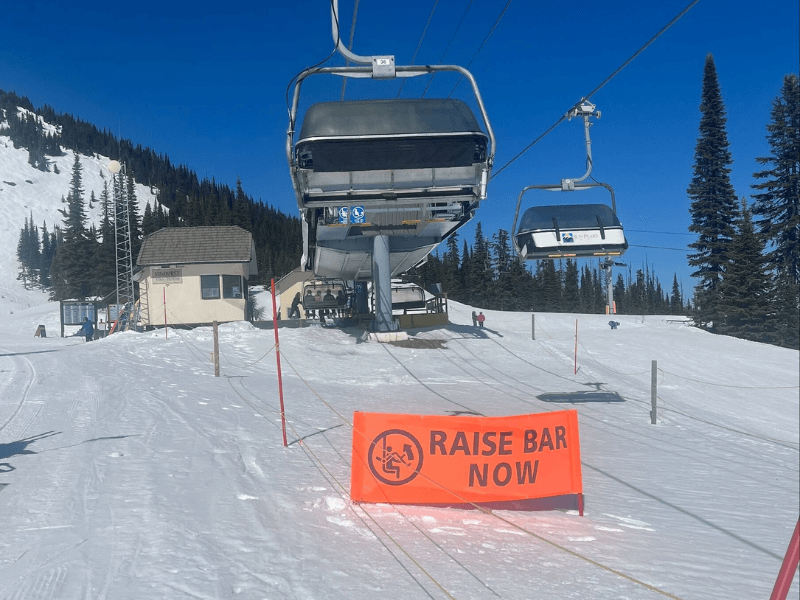Advisory Groups and Committees
Annual State of Safety 2024
Consultations, Advisory Groups, and Engagement
Ongoing input from clients guides our work in identifying and breaking down barriers to safe actions and decisions. Whether it's improving access to information or closing a gap in knowledge, we look for ways to improve service to clients by including their point of view in our decision making.
We aim to better understand our clients' needs by:
- holding consultations on code and fee changes;
- engaging industry experts who provide input and recommendations on issues related to the design, implementation, and evaluation of safety policy and regulation;
- having conversations with clients through product discovery sessions;
- employing client satisfaction surveys; and
- using call transcription AI technology to gain insights from client calls.
506
participants in formal consultations
13
engagement meetings
13
industry events
Gathering Insights from Our Clients
We were research-driven in several key initiatives in 2024 as we explored ways to improve service to clients by garnering their feedback. We asked clients who owned numerous types of regulated equipment about their experiences with our current online services, equipment management, and what new online functionalities they would like to see added. We conducted focus groups with licensed contractors to understand incentives and barriers to renewing their licenses. We updated the survey at the end of each certification exam to gauge client satisfaction with the exam process. We will build on the feedback and findings of 2024 to deliver products and services that will further serve our clients.
Using AI to Anticipate Client Needs
On average, we receive over 300 phone calls each day, mostly from clients who need to transact with us or simply have a question. In 2024, we employed Open AI, Whisper to transcribe all of our recorded calls to text. This enabled us to improve the integrity of this unstructured dataset and analyze it to find frequently asked questions. So far, we have used this knowledge to inform our communications and education efforts to minimize confusion on common topics. As we build on the insights gleaned, over time we will be better positioned to anticipate clients’ needs, effectively providing them with information or a solution before they have to call at all.
Collaboration with Our Clients
In addition to this ongoing work to better the client experience, we make our approach to safety more effective thanks to industry experts who worked with us. Together with these partners in safety, we:
- clarified responsibilities and requirements for decommissioning boilers, pressure vessels, and refrigeration equipment in a new directive;
- recommended adoption of the 2024 edition of the Canadian Electrical Code for use in BC;
- recommended adoption of the latest editions of boilers, pressure vessels, and refrigeration codes for use in BC;
- piloted a digital badge for contractors to demonstrate to customers that they are licensed with Technical Safety BC;
- learned from international jurisdictions about how they regulate public-facing bobsleigh facilities;
- developed a new client portal for licences based on feedback from industry;
- refined our guiding principles and objectives for permits, as we prepare for the next phase of the business transformation project;
- built the foundations for licensed contractors to interact with us and better understand their responsibilities in the safety system; and
- started the groundwork for research into why contractors may work outside of the rules, and why homeowners might hire unqualified workers.
Results from our collaborative approaches include:
Improving Consultations for Adopting Codes and Standards
Codes and standards outline the requirements for manufacturing, installing, maintaining, and operating technical equipment. Codes and standards bodies develop new editions of codes to keep up with changing technology and safety improvements. In previous code adoption consultations, we received feedback that our consultation and adoption process took too long, setting us out of step with the codes used by the rest of Canada. Based on this feedback, we streamlined the consultation process for adopting the latest editions of the electrical code and boiler, pressure vessel, and refrigeration codes. This simplification meant that industry could use the CSA B52:24 Mechanical refrigeration code sooner. This edition contained significant improvements, including easing requirements for refrigeration systems using environmentally friendly refrigerants, and new testing requirements based on learning from recent incidents.
Preventing Falls from Chairlifts
When riding a chairlift, raising the restraining bar too early can increase the risk of falling from an unsafe height. Learning from our work in 2022-2023, we collaborated with a BC ski hill to test whether displaying eye-catching signage would encourage chairlift riders to lift the restraining bar at the correct time. A bright orange "raise bar now" sign was placed after the last tower, on approach to the unload station. Chairlift operators sent us their observational data on rider behaviour before and after the signage was placed.
During our pilot, we found that 65% of riders raised the bar when the chairlift was at an acceptable height, a significant increase from 20% without signage. We presented our findings at the Canada West Ski Areas Association fall meeting in October 2024, and the ski hill we worked with continues to observe positive outcomes with the signage in place.
Preventing Incidents Together
As part of our ongoing commitment to safety, we seek opportunities to share findings from incidents with industry partners and appreciate the open dialogue with industry experts.
To stay up to date with our latest projects, provide valuable feedback in surveys, focus groups, and more, visit our Engage page.

You Might Be Interested In
Building Confidence
Learn about our risks in focus. See how we’re improving the client experience and enforcing against those who work outside of the safety system.
Learn MoreTop 5 Safety Risks
From carbon monoxide to electrical shock and fire, learn about the Top 5 Safety Risks we identified for 2024.
Learn MoreData and Trends
Find key statistics on permits, incidents, injuries, assessments, and more.
Learn More